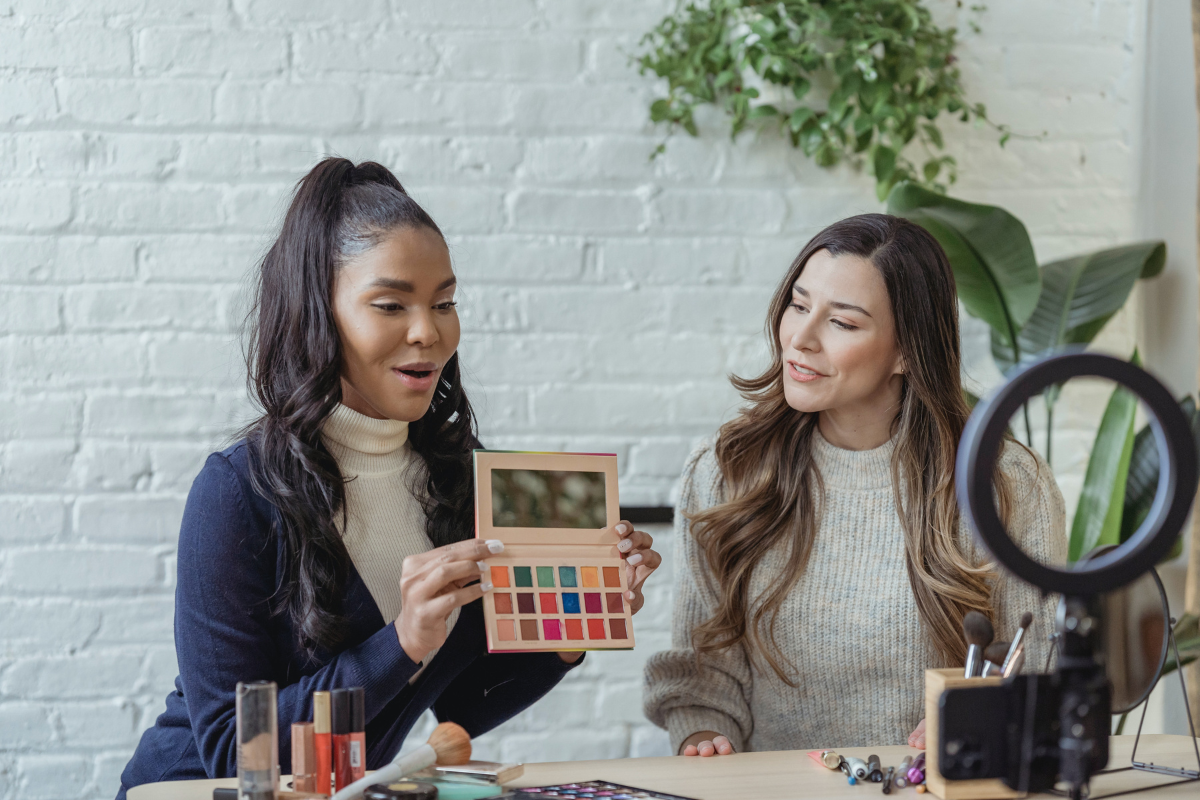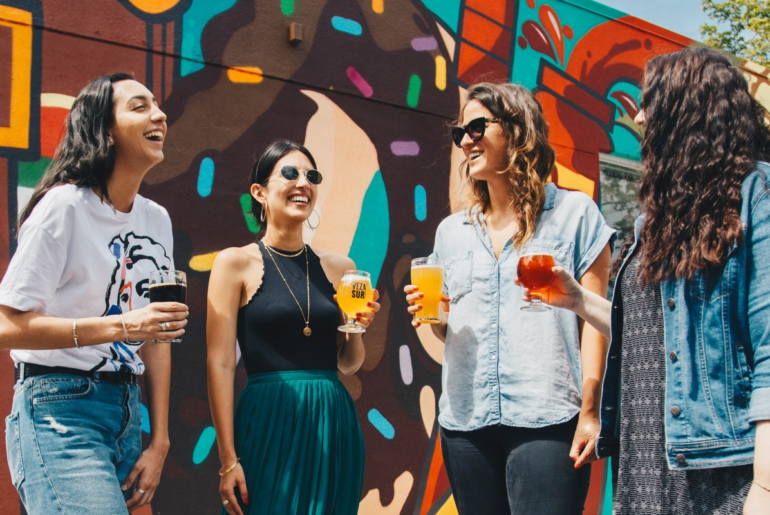There are few marketing tactics older than product sampling marketing, and product sampling programs have always been an incredibly effective way for brands to convert new customers and gain attention in competitive environments.
Product sampling marketing is especially relevant in highly experiential categories such as consumer packaged goods (CPG) like food & beverage and beauty & personal care. The third-largest driver of full-size beauty product purchases is (you guessed it) trying a sample.
Facilitating a brand experience via product sampling marketing is a surefire way to drive conversion, word-of-mouth advocacy, and overall market awareness.
What is Product Sampling Marketing?
Product sampling marketing is an organized business strategy to entice prospective buyers with a free version of your product to generate awareness among your target market and drive purchases.
Unlike other marketing initiatives that are considered intrusive and annoying, consumers love samples. It’s basically on par with a free t-shirt at a sporting event.
Nearly half of consumers indicate they are actively looking for new products. Product sampling marketing invites prospective customers to do just that.
Why is product sampling necessary in marketing?
Product sampling marketing drives business value in several areas.
- Generates interest and awareness
- Drives purchase and new customer acquisition
- Fuels word-of-mouth, reviews, and brand advocacy
- Gathers feedback and consumer insights
Generate new customer interest and awareness
Nielsen innovation data shows that in 2019, a new product was launched to the U.S. marketplace every two minutes, translating to more than 30,000 new products yearly. To stand out, most marketers today invest heavily in advertising. Yet, digital marketing experts estimate that most Americans are exposed to around 4,000 to 10,000 ads daily.
Sampling cuts through the clutter as it offers a direct, personal experience with your brand that you can’t get from an advertisement.
Take it from Stephen Chris, vice president of shopper and omnichannel marketing at Campbell Soup, who said, “Sampling is this amazing and beautiful thing. There is nothing better than actually seeing and tasting the product versus seeing a digital ad or T.V. As much as the world gets complicated, Sampling will always be there.”
Product sampling marketing drives purchase and new customer acquisition
A study found shoppers who sampled a product were 11% more likely to buy it during a 20-week period. In a post-pandemic world, many brands had to rethink Sampling entirely. While Sampling mainly was geared toward places like events and retail, digital product sampling has grown significantly.
Sampling communities rely heavily on data and insights to fuel outreach efforts. This gives marketers the power to activate specific audiences by sending physical samples to their doorsteps and tracking and re-marketing to those consumers.
This way, marketers can reach people who match the ideal consumer, considerably boosting the potential purchase rate.
The types of samping available will become even more interesting in the years to come as voice assistants like Alexa could send you a free product to try. In 2020, people could ask their Alexa voice assistant to send them a free sample of the new Coca-Cola Energy. The promotional deal between Amazon and Coca-Cola started with a Super Bowl commercial that was part of the energy drink’s launch.
Drives word-of-mouth, reviews, and brand advocacy
Consumers today rely on social proof more than ever to discover new brands. Sampling is a great way to spark this conversation, especially when designing a product sampling program with seamless social sharing as part of the experience.
According to a study from HubSpot, consumers discuss specific brands casually around 90 times per week. The study also found that 71% of people trust consumer reviews online.
Additionally, 88% of shoppers like the idea of free samples, with more than half willing to write a review of the product and a third willing to post about it on social media. Make no mistake; consumers are eager to talk about the brands they’ve tried.
Incorporating social sharing into your product sampling marketing supercharges your word-of-mouth and achieves advocacy at scale.
Hero Cosmetics, a fast-growing premium beauty brand, activated their online brand community, Hero Skin Squad, to distribute targeted samples and drive social advocacy. By delivering a brand experience and encouraging their community to share, they drove over 400 product reviews on key retail e-commerce websites. This is truly an example of using your best customers to find your next customers.
A solid product sampling marketing strategy can lead to a steady pipeline of high-quality user-generated content and product reviews.
Gather feedback and consumer insights
Product sampling marketing is a natural opportunity to collect user opinions, and consumers appreciate it when brands consider their sentiments. In fact, 77% of consumers say they favor brands that ask for and accept customer feedback.
Anup Shah, vice president and chief marketing officer of the juice portfolio at PepsiCo Beverages, said Sampling not only helps connect consumers with its new products — but the practice also allows the company to know how its items are doing and potential tweaks it may need to make.
One of our clients, a fast-growing frozen food brand, Veggies Made Great, leveraged its online community with Sampling to dodge product launch risk. The brand targeted and solicited feedback from community members throughout the U.S. to capture a variety of tastes and, within a week, had insights to deliver to the product development team. With necessary modifications, the brand avoided releasing a product that didn’t meet consumer needs.
Why does product sampling marketing work?
While Sampling’s effectiveness might seem intuitive, there are actually several layers as to why it works. Like all marketing, most of it is a deep dive into the psychology of people.
Reciprocity
In social psychology, reciprocity is the social norm of responding to a positive action with another positive action. Humans seek balance in their relationships, and if we receive something from someone for free, we often feel motivated to give them something of value in return.
When receiving a free sample, consumers feel motivated to become paying customers. Whether through a sense of guilt or goodwill, product sampling reciprocity is one reason it works so well.
Providing a sample often leads to a short-term purchase. Still, the more significant business opportunity and value of reciprocity is forming a positive consumer relationship, which will lead to further purchases and overall loyalty.
Foot-in-the-door phenomenon
Coined from a tactic used by the door-to-door salesmen, the foot-in-the-door phenomenon is the tendency for people to comply with some large request after first agreeing to a small request. The saying refers to a door-to-door salesman who keeps the door from shutting with his foot, giving the customer no choice but to listen to the sales pitch.
The person who agrees to a small request feels compelled to continue agreeing to stay consistent with their original decision. This technique is used in many ways and is a well-researched tactic for getting people to comply with requests.
When a consumer agrees to sample and review products, it becomes easier to get them to agree to purchase a full-priced version and to become a frequent customer. When someone expresses support for your brand, they are more likely to remain consistent by committing to it more concretely.
Risk aversion
While most of us like to try new things, we often stick with what we know and gravitate toward the familiar.
Many people practice risk aversion, where they choose a sure outcome over a gamble. It’s a simple economic practice of preferring certainty to uncertainty.
We’ve all experienced buyer’s remorse. Many consumers are hesitant to buy your brand outright, fearing wasting money or time and receiving a poor experience. Giving away free samples allows consumers to “gamble” with no risk.
When you not only remove risk and fear but also delight your prospective buyers with a positive brand experience, you’ve already established yourself as a brand that exceeds expectations.
Product sampling marketing mistakes to avoid
We get it; Sampling is expensive. Not only do you have to pay for distribution access, but also you must pay for the cost of goods. While product sampling marketing is incredibly effective, it is also one of the more expensive forms of marketing. It must be done strategically to drive a positive return on investment.
Here are three mistakes to avoid in your product sampling marketing.
Giving away samples with no further action
Remember the foot-in-the-door phenomenon; if consumers agree to try your product, they are more likely to agree to another ask. Not having a call-to-action as a next step after trying your product is a huge missed opportunity.
You might be tempted to make your call-to-action a request to purchase (which, hey, if you don’t ask, you don’t get), but consider offering another communication touchpoint, especially if your brand has a high price point. Whether it’s a discount coupon, an invite to an online brand community, or joining an email newsletter, it’s essential to keep the conversation going.
Limiting sampling to in-store retail
Cindy Johnson, a veteran of Procter & Gamble, turned sampling consultant, has urged brands to consider where their product sampling marketing will be most effective: in-store at point of purchase; through a partnership that facilitates point of use; or through request-based targeted Sampling.
For example, Johnson says she doesn’t recommend personal care, beauty, or healthcare brands sample in stores. “If you get a sample of shampoo and conditioner in the mail, you might need two or three months to get consumers to try it, because they might have a couple of bottles of shampoo at home. They might not even try it until they go on vacation.” For these products, Johnson suggests point-of-use sampling. “For antiperspirants, for instance, sampling at a fitness club is a good idea,” she says. “Put the sample where the consumer is most likely to try it.”
Over-complicating the product experience
Marketers are creative by nature, and sometimes we can get carried away by the creative when we really just need to let the product do the talking.
Nick Adams, CEO of marketing agency Sense, writes, “With trial, put the product first. Any creative approach should let the product talk. You don’t need a 10-minute audience interaction to get the message across, so the creative need not be complex. In fact, a three-second rule should apply, after which time even a dis-engaged audience should know the product name, when they should be using it and why.”
Product sampling marketing ideas and inspiration
MAC Cosmetics and personalized Sampling
MAC Cosmetics launched a sampling program with augmented reality, where consumers participate in a product-matching virtual try-on experience. After the automatic shade match, the customers claim their sample. The experience combines A.R. try-on and personalized A.I. shade matching with the convenience of physical product sampling. It aims to bridge the gap between online and offline, allowing more confident sampling and purchase decisions.
Sambucol and sampling through an online brand community
Immune support supplement brand, Sambucol, aimed to boost knowledge of Elderberry while turning customers into brand advocates. The brand built the SambuCrew, an online brand community that served as a vibrant home for customers. Whether it’s a new product that needs a boost or general brand awareness, Sambucol distributes targeted samples via their community, leading to more than 10,000 pieces of user-generated content in just one year.
Special K and sampling through eCommerce
Special K partnered with Missguided and ASOS, online fashion retailers, sending samples of portion-size boxes of its brand new cereal, Nourish, with customer orders. Customers were pleasantly surprised to receive an unexpected treat in their expected delivery, and that delight ultimately reached over 865,000 people through social responses and tweets about the campaign.
Heineken and sampling through brand partnerships
For Heineken USA, sampling is among its most valuable tools to connect with consumers in a crowded alcohol space. For their non-alcoholic product, Heineken 0.0, sampling has proven to be particularly effective, with 30% of consumers who try it becoming regular buyers. To drive trial, the brand partnered with meal kit service, HelloFresh. It allowed shoppers to get a sample added to their order with the hope of enhancing the idea of preparing a fresh dinner with a low-calorie non-alcoholic beer.
How TINT delivers in product sampling marketing
Sampling has expanded beyond traditional location-based instances in the past ten years and has become an integral pillar in e-commerce customer experience (CX) and social engagement. We help brands design successful sampling strategies using online brand communities powered by our technology.
New-age Sampling must be interwoven with an inviting consumer experience that is personalized, purpose-driven, and emotionally engaging, ultimately delivering a consumer relationship. TINT’s platform powers sampling through zero-party data targeting that empowers advocacy amplification and review syndication, and seamlessly collects valuable feedback from consumer experiences.
Using our online brand community platform, marketers can utilize this age-old tactic to yield strong relationships, authentic advocacy, and valuable insights that will grab the attention of top company executives.
Questions about product sampling marketing?
Our platform is all about providing brands with the tools they need to run effective product sampling campaigns. Reach out to us with your questions—we would love to help.



